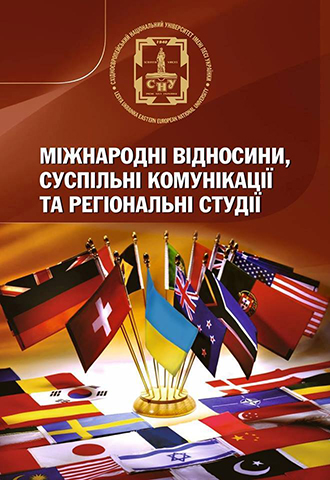
ISSN 2524-2679 (Online), ISSN 2522-1663 (Print)
Founder: Lesya Ukrainka Volyn National University
Year established: 2017
Certificate of state registration, series КВ № 22739-12639 Р dated 24.04.2017.
The scientific Journal «International Relations, Public Communications and Regional Studies» is a scientific specialized edition of Ukraine, which is included to the list of scientific professional publications of Ukraine – Category «B» (Order of the Ministry of Education and Science of Ukraine No. 1188 since 24.09.2020)
Lesya Ukrainka Volyn National University collection of scientific works “International Relations, Public Communications and Regional Studies” is a publication that covers a wide range of research in the field of political science and international relations. The publication contains articles on the theory and history of political science, political institutions and processes, political culture and ideology, political problems of international systems and global development, ethno-political science and ethno-national studies, public communications and regional studies.
Frequency of publication: two times a year.
The purpose of the collection of scientific papers is scientific information, popularization of scientific knowledge, publication of the results of applied and basic research in the field of political science and international relations
The materials are published in Ukrainian, English, Polish.
The journal is displayed in scientometric bases: ERIH PLUS(Norway), Index Copernicus International(Poland), Scientific Ukrainika(Ukraine), and
in repositories and search engines: DOAJ(Sweden), BASE(Germany), Ukrainian scientific periodicals(Ukraine).





